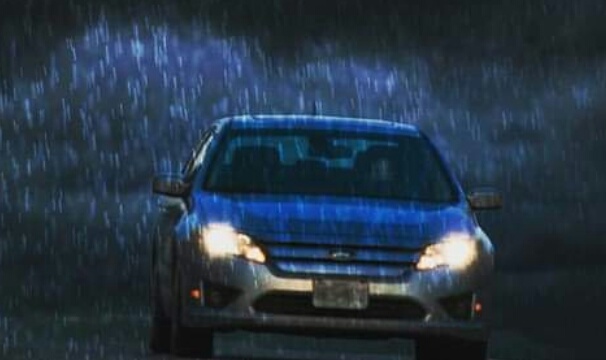Gists
10 Safety Tips For Driving In Rainy Season

In many parts of the world, the onset of monsoon breaks the sweltering heat buildup but raises some serious challenges. Heavy rainfall is a hazard, particularly to driving safety resulting in many road accidents every year.
WHO estimates that around 1.3 million fatalities, on average, are caused by road traffic accidents alone, reported majorly in underdeveloped countries. In the US, NHTSA reports that 445,000 injuries occur due to weather-related accidents, out of which 46% of accidents are caused by rain.
The lack of basic road discipline, poor infrastructure, and ineffective driving safety policies lead to such unfortunate incidents. Furthermore, careless driving practices that are often overlooked are critically threatening while driving in a rainy season.
Therefore, the administrative authorities and drivers must take responsibility and work collectively to avoid accidents and ensure road safety during the rainy season. Let’s discuss some tips for driving in rain that ensure monsoon driving safety.
10 Road Safety Tips for Car Driving In Rain
Research shows that rain or bad weather conditions are the factors that often trigger driving anxiety or fear in individuals. Consequently, car driving in the rain is an exhausting experience for some people. But adopting road safety protocols can certainly help reduce the stress that comes with driving during the rainy season. Some of the practical tips to ensure safe car driving in heavy rain include:
Examine The Vehicle’s Condition:
Before getting on the road, it’s vital to ensure that the major vehicle components, such as acceleration, brakes, and transmission, are functioning correctly.
Keep A Safe Distance On Road:
While driving in the rainy season, keeping a reasonable distance between the vehicles can prevent them from hitting or sudden crashing.
Avoid Congested Routes and Damaged Roads: Consider taking less busy and paved roads to avoid splashing in puddles, wheel jamming in waterlogged patches, or being stuck in traffic. Local news channels and radio often broadcast warnings and guidelines in bad weather. Don’t ignore them.
Maintain Controlled Speed:
One of the classic wet weather driving tips includes driving at a slow or manageable speed that allows for safe braking instead of skidding or losing control over the vehicle.
Turn on the Headlights: Switching on the headlights can significantly improve the visibility affected by heavy rainfall while increasing the readability of road safety signs and pointing out any objects or obstacles in the path. Also, it lets other drivers know where you are and helps prevent collisions.
Avoid Sudden Breaks And Sharp Turns:
Avoid making sudden sharp turns or applying abrupt breaks on slippery and wet roads to prevent skidding. Have a reliable navigation system in the car to look out for such turns in advance and adjust the speed accordingly.
Have A First-Aid Kit In The Vehicle:
Having a safety kit in the car is highly recommended to tackle minor health issues or injuries on the go.
Wear Appropriate Road Safety Gear:
For personal safety and comfort while driving in the rainy season, wear waterproof gear such as raincoats and water-resistant boots.
Keep The Windows Closed:
Closing the car windows can block the water from entering and wetting the interior (steering wheel, gear, seats, or mats), which could lead to discomfort while driving.
Carry A Microfiber Cloth:
The rain droplets hitting the windshield often cause a fog effect, which can be reduced using a microfiber cloth for cleaning the surface from the inside.
An Essential Checklist Before Driving In The Rain Includes The Following:
• Check Tyre Pressure
• Keep The Fuel Tanks Full
• Fix Any Loose Or Impaired Wires
• Test The Windscreen Wipers
• Clean And Adjust The Mirrors
• Monitor The Vehicle Fluid Levels
• Observe The Brakes
• Test The Lights
• Maintain Internal Vehicle Hygiene
• Invest In Regular Maintenance
Driving complications are expected to hit an alarming level during the monsoon. Personal negligence while driving can lead to disastrous results. However, having a personal driving assistant to notice driving patterns and behaviors can help to drive more safely, especially during the rainy season.(CitizenNewsNG)
-

 Osun News5 days ago
Osun News5 days agoArrested OSTMS Chairman, Alowonle On Life Support, As Govt Seeks Prosecution Head of Anti-Kidnapping Squad
-

 Politics7 days ago
Politics7 days agoTinubu sacks top government official, names replacement (photos)
-

 Osun News5 days ago
Osun News5 days agoPolice Arrest Gov Adeleke’s aide, Alowonle
-

 Education1 day ago
Education1 day agoNigerian Varsity Students Elect First Female SUG President (Photo)
-

 Foreign5 days ago
Foreign5 days agoCanadian Govt Takes Fresh Action On Study Permits, Permanent Residency For Foreign Students
-

 Politics6 days ago
Politics6 days agoServing Senator Suspended From Party Over Alleged Anti-party
-

 Osun News3 days ago
Osun News3 days ago“Call Olufon of Ifon-Osun to order before he causes another round of bloody clash” – Olobu-in-Council tells Gov Adeleke
-

 Osun News4 days ago
Osun News4 days agoAlowonle Vs Nigerian Police: My Hands Are Clean ~ Oludo Prince





